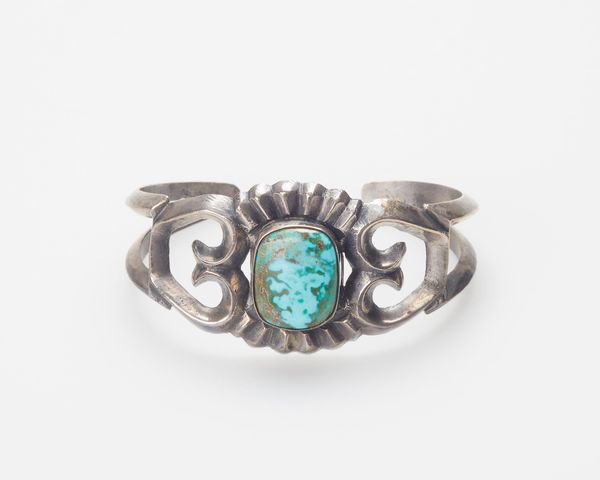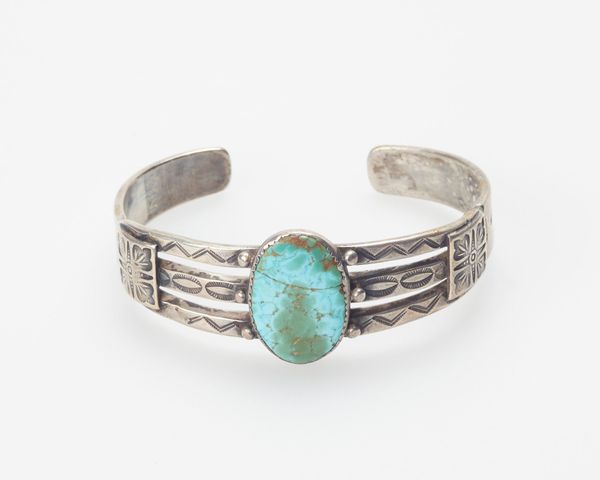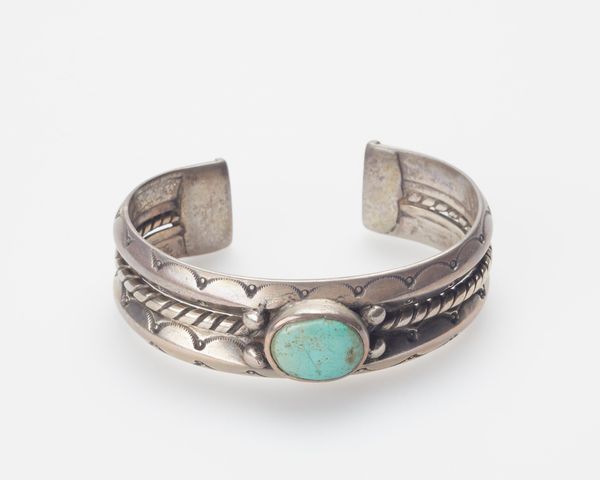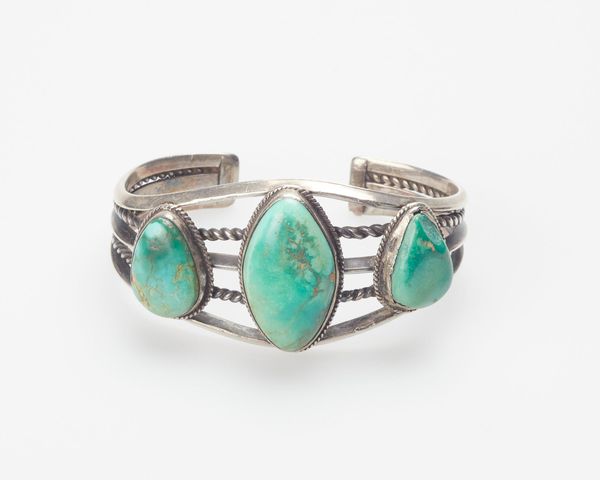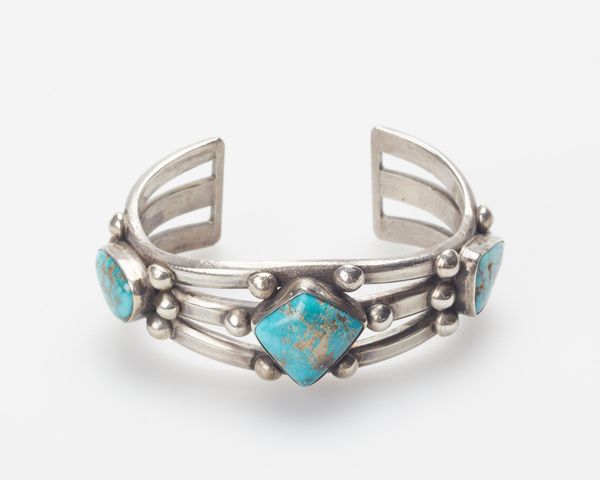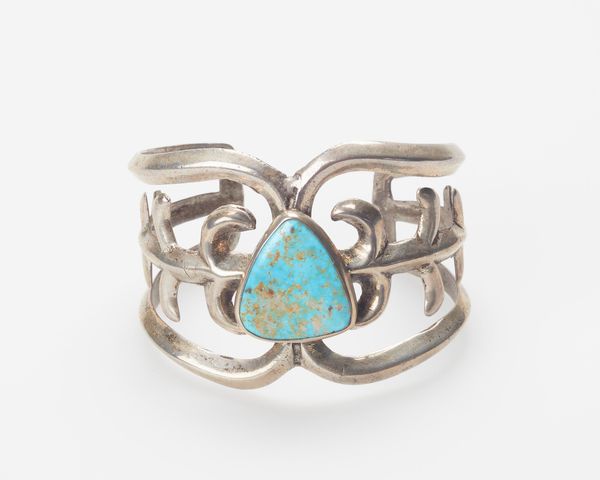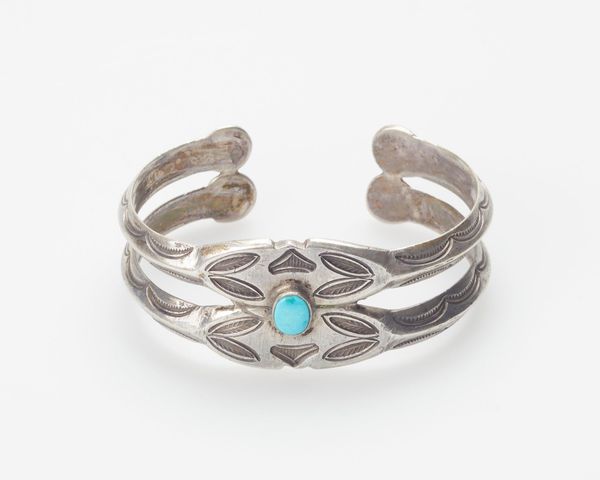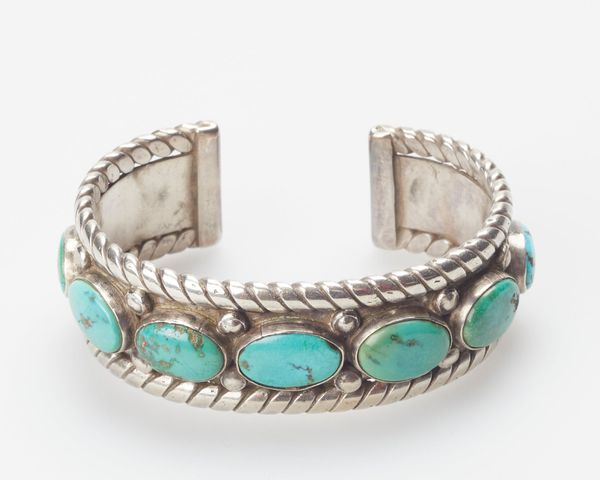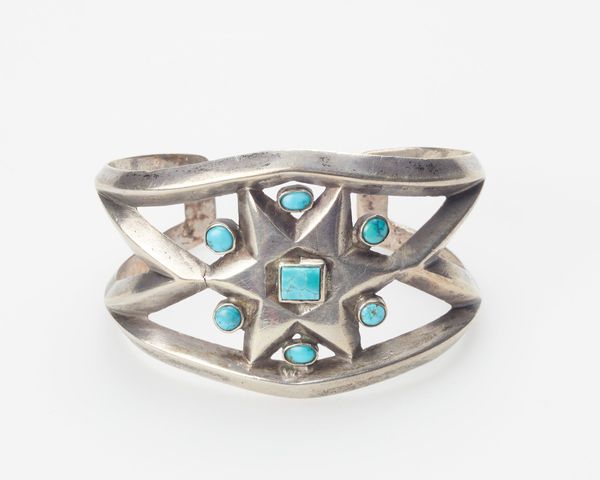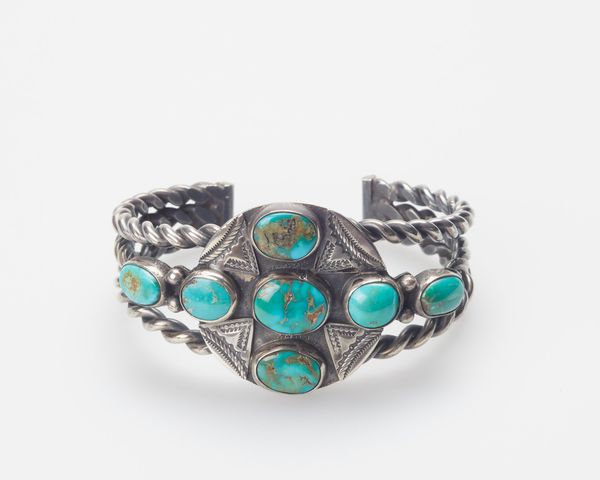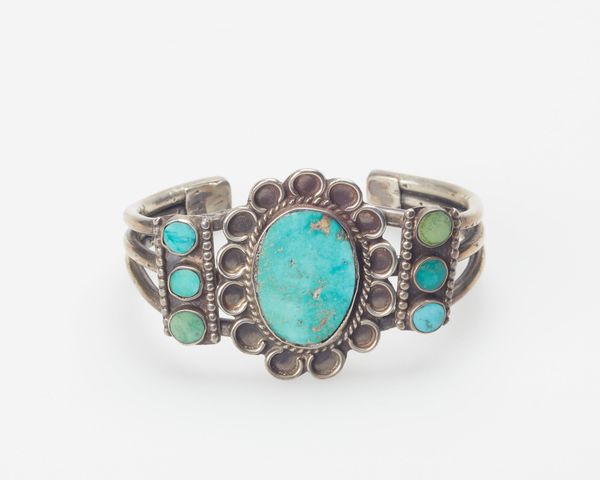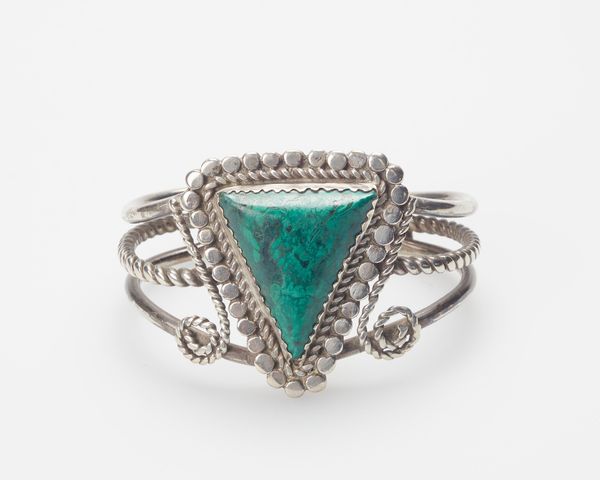
silver, metal
#
silver
#
metal
#
indigenous-americas
Dimensions: 2 1/2 x 3/4 in. (6.35 x 1.9 cm)
Copyright: Public Domain
This bracelet was made by a Navajo artist using silver and turquoise, but we don’t know exactly when. We can understand the bracelet as a product of Native American art traditions but also as shaped by cultural exchange. Navajo silversmithing arose in the mid-19th century after contact with Spanish colonizers and Anglo-American settlers, who brought new materials and techniques. The bracelets, necklaces, and other items made by Navajo artists became important trade items. By the early 20th century they were sold to tourists traveling through the Southwest. The turquoise in the center of the bracelet is a stone sacred to the Navajo. The heart shapes on either side of the turquoise are associated with love and friendship in Western culture. How can we understand the merging of Native American and Western symbols? Is the artist celebrating cultural hybridity, or perhaps subtly critiquing the power dynamics of the marketplace? To learn more, we need to study the history of Navajo art and economics, and consider the role of museums in collecting and displaying Native American art. The meaning of art depends on its social and institutional context.
Comments
No comments
Be the first to comment and join the conversation on the ultimate creative platform.
